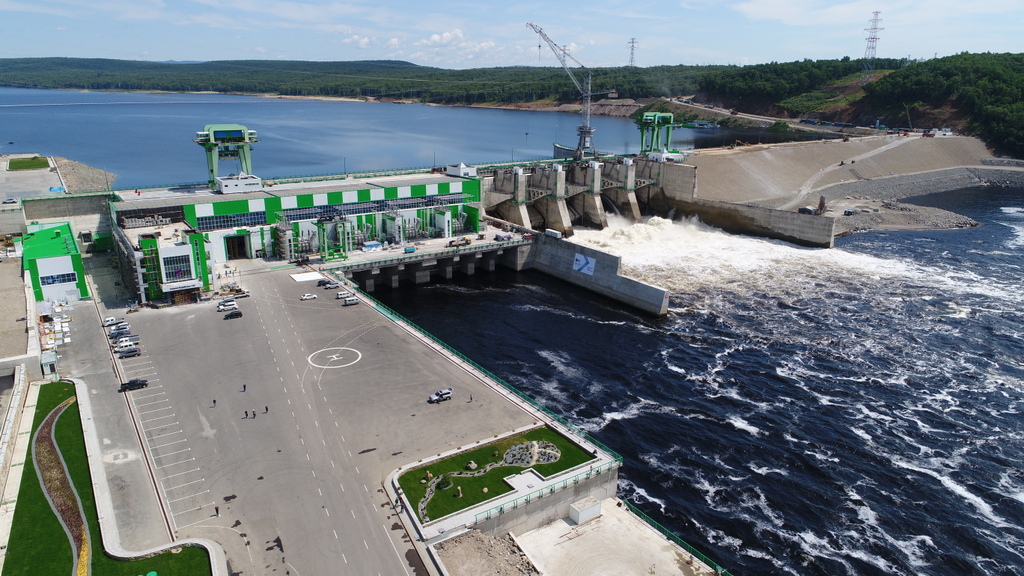Russian hydropower producer Rushydro and compatriot module manufacturer Hevel Solar have jointly announced the launch of what is said to be Russia’s first hybrid hydro-PV project.
The two companies said that a 1.27 MW pilot solar power plant will be installed at a hydropower plant owned and operated by Rushydro in the Amur region, in the Russian Far East – the 320 MW Nizhne-Bureyskaya facility. The solar plant is intended to reduce cost of electricity for the power plant’s own needs, while unlocking additional output by the hydroelectric plant, the companies added.
When asked by pv magazine if the project may rely on a floating technology, the head of corporate communication of Hevel, Anton Usachev said that, according to the current project design, the PV plant will be mounted on the slope of the dam, but that the floating option seems to be completely excluded. “The lower slope of the soil part of the dam is oriented to the south-west, which allows the placement of solar modules taking into account the maximum solar radiation,” the two companies said in their statement
The project, Usachev went on to say, will be Russia’s first hybrid hydro-solar project, as the PV plant will be connected to the same substation of the hydropower facility and feed the same grid.
Popular content
The commissioning of the project is scheduled for the end of this year. The solar plant will rely on heterojunction modules of 370 W provided by Hevel.
Rushydro announced a plan to expand the use of solar energy across its service territory in June 2017. At the time, the company said it wanted to deploy off-grid medium-sized PV plants across remote areas of Yacutia, a region in Russia’s Far Eastern Federal District. The company’s unit PJSC RAO ES East, which operates in isolated areas of the Far East of Russia, is also targeting the installation of 146 MW of renewable energy generation capacity. At that time, Hevel Solar also announced it intended to build off-grid solar plants in the Russian Far East, the country’s easternmost region with limited access to electricity and transmission networks. The region, which is the largest and the least populated district of Russia, has the poorest energy and transport infrastructure of the country. In order to improve its infrastructure, the Russian government is seeking to attract investors primarily from the countries of the Asia-Pacific region.
This content is protected by copyright and may not be reused. If you want to cooperate with us and would like to reuse some of our content, please contact: editors@pv-magazine.com.



0 comments
By submitting this form you agree to pv magazine using your data for the purposes of publishing your comment.
Your personal data will only be disclosed or otherwise transmitted to third parties for the purposes of spam filtering or if this is necessary for technical maintenance of the website. Any other transfer to third parties will not take place unless this is justified on the basis of applicable data protection regulations or if pv magazine is legally obliged to do so.
You may revoke this consent at any time with effect for the future, in which case your personal data will be deleted immediately. Otherwise, your data will be deleted if pv magazine has processed your request or the purpose of data storage is fulfilled.
Further information on data privacy can be found in our Data Protection Policy.